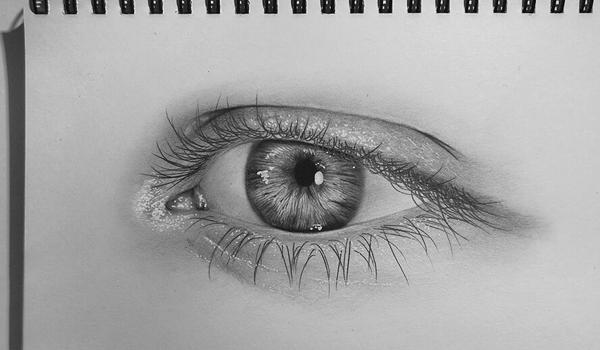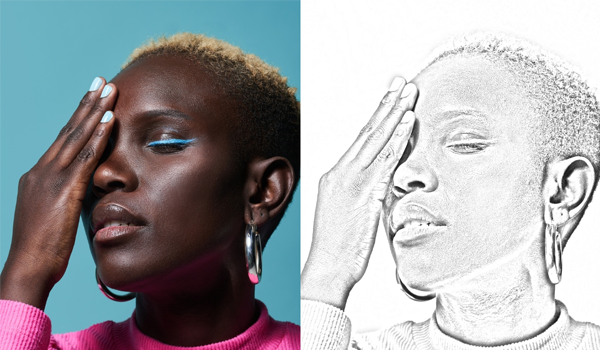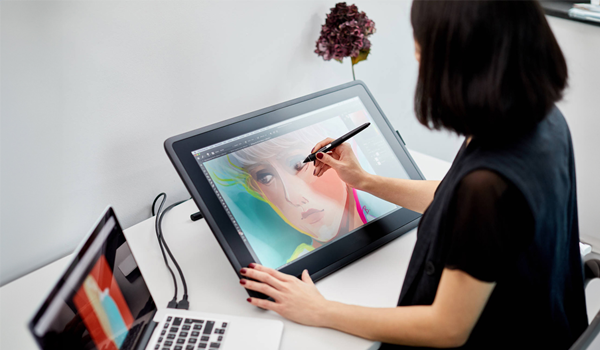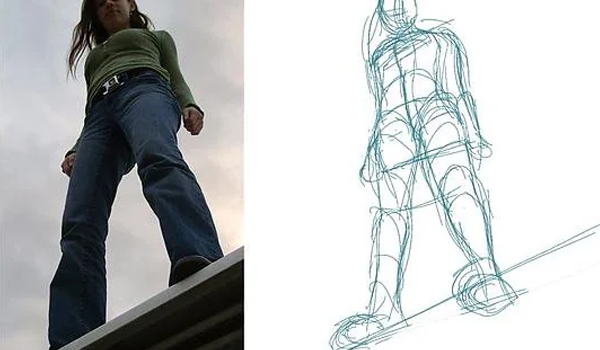Doodles to draw realistic have evolved from simple, casual sketches into a powerful tool for aspiring artists to develop their skills. While doodling is often viewed as a light-hearted pastime, it can serve as the foundation for more advanced, realistic artwork. For those looking to bridge the gap between abstract doodles and detailed realism, focusing on doodles to draw realistic is an excellent starting point. By honing basic techniques and gradually incorporating more complex elements, even the most straightforward doodles can transform into impressive, lifelike representations.
Understanding the potential of doodles to draw realistic involves more than just practice; it’s about mastering key elements such as line control, shading, and perspective. With the right approach, anyone can take their doodling from casual sketches to realistic art that captures the essence of the subject matter.
Understanding the Basics of Doodling for Realistic Art

Mastering doodles to draw realistic begins with a solid understanding of basic doodling techniques. At its core, doodling is about free-form drawing that flows naturally from the hand, often without much forethought. However, when your goal is realism, this spontaneous process must be coupled with an understanding of foundational art principles.
Before diving into complex subjects, it’s crucial to get comfortable with drawing simple shapes and lines. These basics are the building blocks for creating more detailed and realistic doodles. As you progress, you’ll start to see how these simple forms can evolve into more intricate designs, forming the backbone of your realistic doodles.
Why Start with Simple Doodles?
When it comes to doodles to draw realistic, starting with simple shapes is essential. Simplicity allows you to focus on the fundamental skills needed for realism without being overwhelmed by details. Simple doodles help you understand the importance of proportions, symmetry, and basic line work—all of which are crucial when aiming for realistic depictions.
For beginners, it’s beneficial to start with basic geometric shapes or everyday objects. These provide an easy canvas on which to practice controlling your lines and shading, two elements that are vital for creating depth and dimension in your doodles. As your skills improve, these simple doodles can gradually incorporate more complex elements, leading you to more realistic creations.
The Importance of Line Control in Realistic Doodles
One of the most critical aspects of creating doodles to draw realistic is mastering line control. In realistic art, lines are not just about outlining shapes; they are also about creating texture, defining shadows, and bringing out details that contribute to the overall realism of the drawing.
Practicing line control involves varying the pressure applied with your drawing tool, which can change the thickness and darkness of the lines. This technique is essential when transitioning from basic doodles to more detailed and realistic images. By refining your line work, you can start to add intricate details that make your doodles look more lifelike.
Transitioning from Abstract to Realistic: The First Steps
Moving from abstract doodles to realistic art is a gradual process that requires patience and practice. To successfully create doodles to draw realistic, you should start by simplifying complex subjects into basic shapes. This step allows you to break down what you see into manageable parts, making it easier to draw them accurately.
Once comfortable with these basic shapes, begin adding layers of detail. Focus on the light source and how it affects the object, incorporating shading to give your doodles depth. Gradually, you’ll be able to build more complexity into your doodles, moving closer to realistic representation.
Techniques to Make Your Doodles Look Realistic

When aiming to create doodles to draw realistic, it’s essential to go beyond basic shapes and lines. The transition from simple doodles to realistic art involves mastering various techniques that add depth, dimension, and texture to your drawings. By incorporating methods such as shading, blending, and understanding light and shadow, you can elevate your doodles to a new level of realism. These techniques are not only accessible but can also be executed using simple tools, making them ideal for artists at any skill level.
Using Shading to Add Depth and Dimension
Shading is one of the most powerful techniques for making doodles to draw realistic. By carefully applying varying levels of pressure with your pencil or pen, you can create the illusion of depth and three-dimensionality in your doodles. The key is to understand where the light source is coming from in your composition. Areas that are closer to the light should be lighter, while areas that are further away should be darker. This contrast helps to define the shape of the object and gives it a more realistic appearance.
To start, practice creating gradients from dark to light on a simple shape like a sphere or cube. This exercise helps you get comfortable with the pressure needed to create different tones. Over time, you can apply these skills to more complex subjects, adding depth and dimension to your doodles.
Blending Techniques for Smooth Transitions
Once you’ve mastered basic shading, the next step in creating doodles to draw realistic is blending. Blending allows for smooth transitions between different shades, which can enhance the realism of your doodles. You can use tools such as a blending stump, cotton swab, or even your finger to gently blend the shaded areas. This technique is particularly effective in softening harsh lines and creating more natural-looking shadows.
When blending, it’s important to work in layers. Start with light shading and gradually build up the darker areas, blending as you go. This approach ensures that your transitions are smooth and that the drawing retains a cohesive look.
Creating Realistic Textures with Simple Tools
In addition to shading and blending, adding texture is another critical technique for making doodles to draw realistic. Texture gives the viewer a sense of the material that the object is made of—whether it’s rough, smooth, furry, or metallic. Simple tools like a pencil, eraser, or even a ballpoint pen can be used to create a variety of textures.
For example, to draw a realistic tree bark, you might use short, quick strokes to mimic the roughness of the surface. For smooth surfaces, gentle shading with gradual transitions can simulate materials like glass or water. Practicing these techniques on different surfaces, such as paper or canvas, can help you understand how to achieve the desired texture.
Understanding Light and Shadow in Doodles
Finally, understanding how light and shadow interact is crucial for making doodles to draw realistic. The way light hits an object and casts shadows defines its form and gives it volume. A good practice is to study real-life objects under various lighting conditions. Observe how the light creates highlights and shadows, and try to replicate these effects in your doodles.
When drawing, always keep in mind where your light source is. This will help you accurately place highlights and shadows, which are essential for creating a realistic effect. Additionally, using techniques like cross-hatching or stippling can help to build up the darker areas and enhance the contrast in your drawing.
Advanced Doodling Techniques for Realism
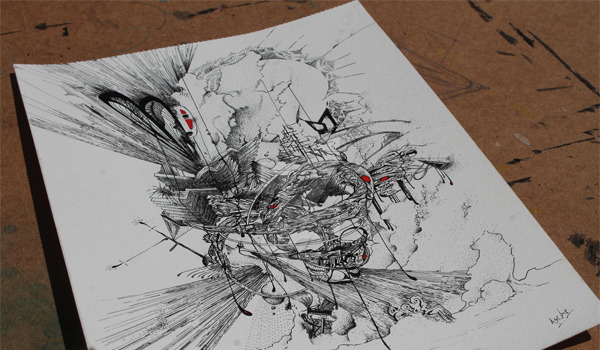
As you become more comfortable with basic techniques in doodles to draw realistic, advancing to more sophisticated methods can further enhance the lifelike quality of your drawings. These advanced techniques involve focusing on minute details, experimenting with layering, and exploring continuous line doodles, which push the boundaries of traditional doodling. Mastering these approaches will allow you to create more intricate and realistic artwork, taking your doodles from simple sketches to detailed representations.
Incorporating Detail in Small Spaces
Incorporating fine details into small spaces is a crucial step in elevating doodles to draw realistic. This technique requires patience and a steady hand, as even the smallest details can significantly impact the overall realism of the drawing. Whether you’re working on a small-scale portrait or a detailed scene, attention to tiny elements like wrinkles, textures, or reflections can bring your doodles to life.
One effective way to practice this is by using a fine-tip pen or a sharp pencil to add tiny details in areas like eyes, fur, or leaves. These details often involve short, precise strokes that mimic the natural textures of the subject. Focusing on these small elements not only improves the overall quality of your doodles but also enhances your observational skills, making it easier to replicate real-life details in your artwork.
Layering Doodles for a Realistic Effect
Layering is another advanced technique that can make doodles to draw realistic appear more three-dimensional and dynamic. By layering different elements on top of one another, you can create depth and a sense of space within your doodles. This approach is particularly effective in complex compositions where multiple objects overlap or interact with each other.
To achieve a layered effect, start by sketching the basic outline of your doodle. Then, gradually add layers of detail, starting with the elements furthest in the background and working your way to the foreground. Each layer should be slightly more detailed than the last, building up the complexity of the scene. Using different shades, tones, and textures in each layer will enhance the realism of the final piece.
Continuous Line Doodles: From Simple to Complex
Continuous line doodles are a unique and challenging way to create doodles to draw realistic. This technique involves drawing the entire subject without lifting your pen or pencil from the paper, resulting in a fluid, uninterrupted line. While this may seem simple at first, creating a realistic image using this method requires careful planning and control.
To start, choose a simple subject and practice drawing it with a continuous line. Focus on keeping the line steady and even, and think ahead to where the line will need to go to capture all the necessary details. As you become more comfortable with the technique, you can attempt more complex subjects, incorporating shading and texture within the continuous line to add depth and realism.
By mastering these advanced doodling techniques, you can push the boundaries of what’s possible with doodles to draw realistic, creating artwork that is not only detailed and lifelike but also creatively expressive.
Practical Tips for Improving Your Realistic Doodles
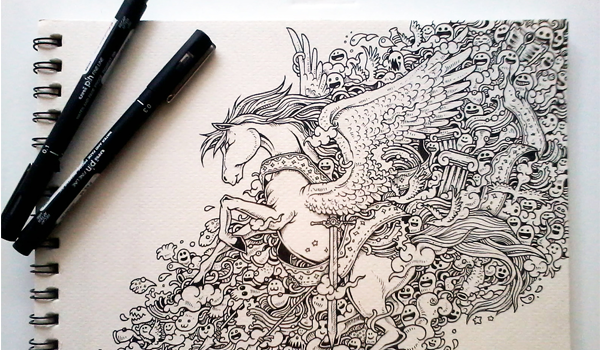
As you continue to develop your skills in creating doodles to draw realistic, it’s essential to adopt habits and techniques that will refine your abilities and enhance the quality of your work. Regular practice, experimenting with different tools, and using reference images are all practical strategies that can significantly improve the realism of your doodles. These tips are designed to help you build consistency, explore new possibilities, and ensure that your artwork remains both challenging and enjoyable.
Daily Practice: The Key to Mastery
Consistency is crucial when it comes to mastering doodles to draw realistic. Daily practice not only helps you refine your techniques but also ingrains the muscle memory needed to execute precise and controlled strokes. By dedicating even just 10-15 minutes a day to doodling, you can gradually improve your line control, shading, and ability to capture realistic details.
To make the most of your practice sessions, focus on specific aspects of your doodling each day. For instance, you might spend one session working on shading techniques, while another could be dedicated to drawing textures. Over time, these focused practices will build a solid foundation for creating highly realistic doodles.
Experimenting with Different Pen Nib Sizes
The tools you use can greatly influence the outcome of your doodles to draw realistic. Experimenting with different pen nib sizes allows you to explore a range of line thicknesses, which is essential for adding depth and detail to your artwork. Fine nibs are perfect for intricate details and delicate textures, while broader nibs can be used to create bold outlines or to fill in larger areas with shading.
Trying out different nib sizes can also help you understand how varying line thicknesses affect the perception of distance and perspective in your drawings. For example, using thinner lines for distant objects and thicker lines for those in the foreground can create a more realistic sense of depth.
Using Reference Images to Enhance Realism
One of the most effective ways to improve the realism of your doodles to draw realistic is by using reference images. Reference images provide a visual guide that helps you accurately capture proportions, textures, and lighting. Whether you’re doodling a complex landscape or a simple object, having a reference ensures that your drawing is grounded in reality.
When selecting reference images, choose high-quality photos that clearly show the details you want to capture. Spend time analyzing the image before you start drawing, noting how light interacts with the subject and how different textures are represented. As you work, refer back to the image frequently to ensure accuracy and consistency in your doodle.
Final Thoughts: Evolving Your Doodling into Art
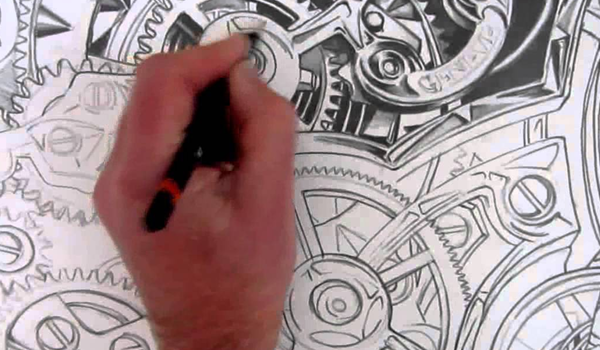
As you advance in your journey of creating doodles to draw realistic, it’s important to recognize the potential for these simple sketches to evolve into full-scale works of art. Doodling is not just a playful pastime; it’s a fundamental exercise that can significantly enhance your overall artistic skills. Understanding when to take your doodling to the next level and how it contributes to your growth as an artist will help you maximize the benefits of this creative practice.
When to Move from Doodling to Full-Scale Art
Determining the right moment to transition from doodling to more comprehensive art projects can be pivotal in your artistic development. If you find that your doodles are becoming increasingly detailed and complex, or if you’re consistently experimenting with advanced techniques like shading, layering, and texturing, it may be time to challenge yourself with larger, more ambitious pieces.
Consider starting with small-scale projects that incorporate the skills you’ve developed through doodling. As your confidence grows, gradually increase the size and complexity of your work. This progression allows you to apply what you’ve learned in a broader context, helping you create more polished and refined artwork.
How Doodling Enhances Overall Artistic Skills
Engaging in doodles to draw realistic regularly can have a profound impact on your overall artistic abilities. Doodling sharpens your observational skills, enhances your understanding of form and texture, and improves your hand-eye coordination—all of which are essential for creating more sophisticated art. Moreover, doodling encourages experimentation and creativity, providing a low-pressure environment where you can explore new ideas and techniques.
The skills gained from doodling are transferable to other forms of art, whether you’re working on painting, digital art, or sculpture. By incorporating the lessons learned from your doodles, you can approach these mediums with greater confidence and technical proficiency. Ultimately, doodling serves as a foundation upon which you can build your artistic practice, making it an invaluable tool in your creative journey.
